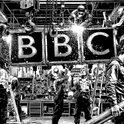Early on the morning of 19th September 2014 David Cameron responded to the outcome of the Scottish Referendum result with an opportunism that mocked the result that had just been secured. The Conservative Party’s version of “English votes for English laws,” rejects the rational solution of devolution all round. Instead their preferred choice would subvert any British government that did not incorporate a majority of English MPs—or to put it in partisan terms, many governments that were not wholly or predominantly Conservative in their parliamentary base.
This combination of crudity and confusion with the repeated assertion that a government supported by the Scottish National Party on a vote-by-vote basis is inherently illegitimate is a potentially explosive electoral gambit. The prime purpose is to portray the Labour Party as the agent of chaos both economic and constitutional. The Conservative Party have been there before, about a century ago, in their battle with the Liberals over Ireland.
In 1910, the Irish issue had shaped British politics for almost three decades—since the mid-1880s. The Liberal Party had split in 1886, when dissident Liberals had joined with the Tories to resist home rule. The shared title Unionist was often used to refer to the resulting expanded Tory party. The remaining Liberals had spent most of the next 20 years in opposition. They were vilified in Unionist propaganda as anti-English. As a Unionist pamphlet insisted in 1894 during a brief period of Liberal Government dependent on Irish votes, “how long will you endure a Government that... flouts and scorns your interests, that votes down the rights of England by Irish and Welsh majorities, and that favours every hostile faction and every separatist clique at the expense of the English people?” Predictably the Liberals, although committed in principle to Irish home rule, were reluctant to prioritise an issue that had divided the party and damaged its electoral prospects, not least because of Unionist appeals to anti-Irish xenophobia.
After the December 1910 election, the Unionists had 271 seats in the Commons, the Liberals just one more. There were 40 Labour Members, almost all elected without Liberal opponents. Yet for the latter two parties to form a government, they depended for a majority on the 84 Irish members dedicated to the pursuit of home rule. This modest proposal provoked visceral Tory opposition to what they insisted would be the beginning of the end of Empire. But the Liberal leadership could no longer ignore the issue, and in August 1911 the ending of the veto power of the Tory-dominated House of Lords made home rule credible politics for the first time.
The repeated assertion that a government supported by the Scottish National Party is inherently illegitimate is a potentially explosive electoral gambitThe Unionist response was vitriolic. Their electoral revival from the trough of 1906 had been impressive but inadequate, so near and yet so far. They were becoming an apparently permanent opposition. They proclaimed the illegitimacy of a government dependent on the support of those they depicted as separatists. The conciliatory Irish Party leader John Redmond was presented as the dollar dictator, his power allegedly dependent on funds from nefarious networks of Irish Americans. The emergence of Bonar Law as Unionist leader in 1911 replaced the urbane Balfour with a man whose Ulster family background made him highly responsive to Protestant opposition to home rule. The escalation that followed was fuelled by intemperate oratory, not least at a mass meeting of anti-home rule factions at Blenheim Palace; parliamentary scenes were the theatrical embellishments to a strategy of seeking to derail home rule by using Ulster opposition as a wedge. Rhetoric gave way to armed drilling, the possibility of senior military figures refusing to coerce Ulster opposition and by the summer of 1914 deadlock. Some feared civil war.
Yet through all the drama unleashed by a party that claimed to be the guardian of the constitution and yet was subverting parliamentary procedures by inciting direct action, the ministerial majority could highlight progressive measures. National Insurance, the principle of a minimum wage for miners, legislation that ensured that trade unions could raise funds for political purposes, were products of this supposedly illegitimate government. The Irish Party was itself hardly the destructive force of Unionist fantasy it sought home rule through an alliance with the Liberal Party, founded on a secure electoral foundation and the careful and vigorous use of parliamentary institutions.
Its limitations would in retrospect become increasingly obvious. Dominance fostered vulnerability as the party became estranged from radical and innovative movements amongst young Nationalists. The party’s unsympathetic response to the Dublin working class in the 1913 lockout taking on a Nationalist employer showed how sensitivity to the miseries of rural Ireland was not complemented by an equivalent urban empathy. After all William Martin Murphy the Dublin workers’ rich adversary was a backer of home rule. These so called separatists, The Irish Party, articulated the prospect of a reformed Anglo-Irish relationship that would strengthen the Irish position within both the United Kingdom and the Empire. One inspiration was the compact between the British and the Boers that had produced the Union of South Africa in 1910, seen widely by contemporaries as an act of enlightened liberal statesmanship.
Such prospects seemed blocked in the summer of 1914; there followed the transformation of Irish politics, the destruction of Redmond’s party and its replacement by a separatist nationalism. The Easter Rising, the anti-conscription campaigns, the 1918 election, the formation of the first Dail, the War of Independence and the formation of the Irish Free State, this drama marginalised the pre-war constitutional nationalist tradition. The causes were multiple—the complexities of war, political misjudgements, the vivacity of a revolutionary generation whose hopes would not be realised in the Free State and its successor. Yet the separatist argument gained vital traction with the insistence that constitutional nationalism had been blocked by a British establishment whose prejudices were proclaimed by a Conservative party prepared to inflame prejudices for political advantage seemingly without regard to consequences.
Perhaps a cautionary tale for now, but there is another one. The passions unleashed after 1910 eventually rebounded to the benefit of the Conservative Party in respect of British politics. The formation of the Free State permanently removed a bloc of anti-Tory MPs from the Commons. This change in the electoral terms of trade would facilitate the dominance of the Conservative Party between the wars. Any proposal to weaken the position of Scottish MPs at Westminster perhaps culminating in their disappearance would similarly diminish the possibility of a progressive majority.












